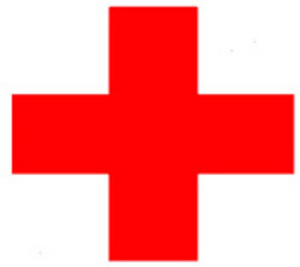Recently I experienced one of the most horrific injuries I have ever seen. After having an abdominal hysterectomy, I returned home to recover in the comfort of my own bed. I made it two days before my incision exploded. I was left with an open wound 10″ long by 3″ deep and simple instructions on how to care for this large open wound. I was scared to death.
HAVE HELP
The first thing to remember when caring for an open wound is to be prepared and have help. No one can do this alone so you will need a helper with a strong stomach and some sort of medical knowledge. If neither you nor your helper has any medical experience, ask your doctor for a hands-on demonstration of the proper technique and feel free to take notes.
STOCK UP ON SUPPLIES
When caring for an open wound, it is important to have an abundance of the supp0lies you will need on hand. You never want to be in the middle of a dressing change on to find you have run out of something you really need. And always remember, unless your doctor prescribes the supplies you will be using, your insurance probably will not pay for them.
Listed below are the supplies you will need. Keep in mind, this list may vary based upon your condition and the type of wound you have.
4X4 Gauze Pads
Sterile Water
ABD Pads (I used large maxi pads)
2 Containers for Liquid (I used sterile urine collection cups)
Hurt Free Tape
Sterile Gloves
Anti-Bacterial Hand Soap
Chucks Pads
Irrigation Syringe
Trash Can
Bed Tray
SET UP BEFORE YOU BEGIN
One of the most important parts of caring for an open wound, is preparation. You will be changing your dressing at least three times a day and this will not be comfortable at first. Until you and your helper find a pattern and get used to the ordeal, it is important to have your entire area ready before you begin.
The Setup:
Set out the bedside table. Fill one cup with ½ sterile water and ½ hydrogen peroxide. Fill the second cup with sterile water. Place the irrigation syringe in the hydrogen peroxide mixture. Open as many 4X4 gauze pads as you will need to pack the open wound and place them in the sterile water. Open additional 4X4 gauze pads to use as a dry layer over the wet pack layer. Place ABD pad on the table and tear off strips of tape to secure the ABD pad. Place trash can near the bedside and a chuck pad within reach.
Once you finish the setup, you are ready to change the dressing.
CHANGING THE DRESSING
As your helper washes his/her hands and puts on sterile gloves, you will prepare yourself for the dressing change. Depending on where your wound is, you will place the chuck pad under the area to be irrigated. The chuck pad will catch the irrigation liquid.
After you are in place, your partner will remove the old dressing and discard in the trash can. It is normal for the inner wet gauze to have dried and be slightly stuck. Removing these pads also removes the dead and dying skin, virtually cleaning the area each time the dressing is changed.
After discarding the old dressing, your partner will irrigate the wound with the hydrogen peroxide mixture. Then the wet gauze will be stuffed into the wound, followed by a layer of dry gauze. Your partner will then cover the packing with the dry ABD pad and secure with tape. The dressing change is now complete.
AFTER THE CHANGE
When you are finished changing the dressing, be sure to allow yourself a few moments to just relax. Allow your helper to clean the area and store everything for the next change.
OTHER OPTIONS
When caring for a large, open wound, your doctor may suggest an in home nurse be allowed to visit you once a day or more to change your dressing. If you do not have a helper or your helper does not feel comfortable changing the dressing alone at first, this may be an option.
Always remember to listen to the doctors instructions when caring for an open wound. His/her tips as well as information available online will help you to better understand the procedures and effects of a wet to dry pack dressing.


